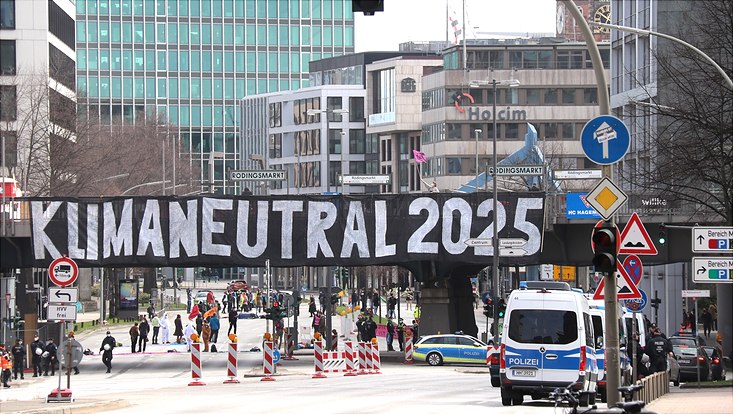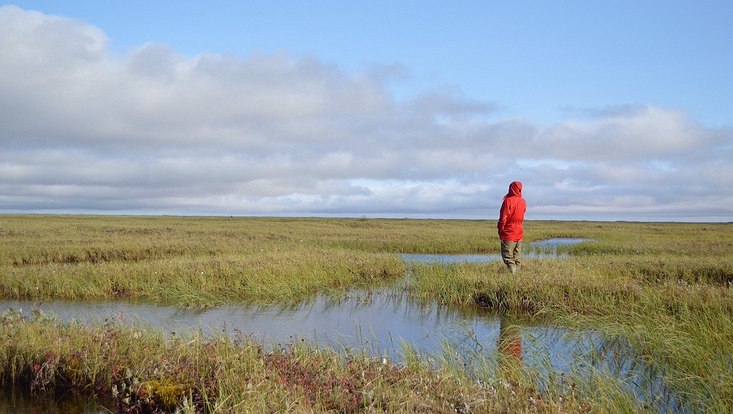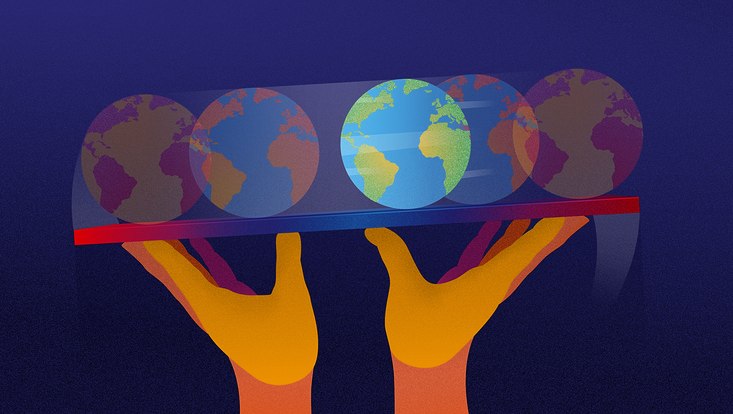and Society (CLICCS)
PositionspapierDealing with the 1.5°C goal
9 October 2024, by Deutsches Klima-Konsortium (DKK)

Photo: UHH/T.Wasilewski
Key messages
1. The foreseeable exceedance of the global temperature goal of remaining below 1.5°C should be openly communicated and taken into account in political action. The Sixth Assessment Report of the Intergovernmental Panel on Climate Change (IPCC) states that the 20-year average of the global temperature increase is expected to exceed the 1.5°C limit by the early 2030s. Climate adaptation strategies should be based on and prepare for currently plausible temperature scenarios. Irrespective of this, every effort must continue to be made to limit the temperature increase in accordance with the Paris Agreement.
2. 1.5°C is not a physical threshold for climate change. There is no clear-cut transition from a safe climate to dangerous climate change. Climate change is already causing considerable and, in some cases, irreversible damage in many parts of the world. In many places, the change in the local average temperature deviates significantly upwards and downwards from the global average.
3. With every further increment of increase in global warming, changes in weather extremes will continue to increase. In its Special Report on Global Warming of 1.5°C, the IPCC highlights differences in the expected climate impacts between 1.5°C and 2°C. It states that there will be considerably more damage due to climate change at 2°C than at 1.5°C. The IPCC's Sixth Assessment Report shows that for every half degree Celsius increase in temperature, there will be discernibly more heatwaves, heavy rainfalls and flooding events .
4. The Paris Agreement is binding under international law and therefore cannot be abandoned. It states the goal of limiting global warming to well below 2°C and specifies this with reference to 1.5°C. Article 2 states that the "threat of climate change" should be reduced by "holding the increase in the global average temperature to well below 2°C above pre-industrial levels and pursuing efforts to limit the temperature increase to 1.5°C above pre-industrial levels, recognizing that this would significantly reduce the risks and impacts of climate change". In Article 4, the Paris Agreement specifies the goal of greenhouse gas neutrality and sets a time horizon for this. The article states that global greenhouse gas emissions should peak “as soon as possible [...] so as to achieve a balance between anthropogenic emissions by sources and removals by sinks […] in the second half of this century”. The Paris Agreement adopted by 195 countries and the EU thus politically defines what is considered dangerous climate change and what is to be avoided through appropriate political measures.
5. The Paris Agreement does not set a specific time horizon for the temperature goal. However, the exact wording "holding the increase […] to well below 2°C" (Paris Agreement, Art. 2, emphasis added) can be interpreted as an indication that the climatically averaged temperature increase should be kept well below 2°C permanently and at all times. Nevertheless, the concept of "overshoot" – that is, temporarily exceeding the temperature threshold of 1.5°C – has emerged in the climate change discourse. However, even if the temperature goal of 1.5°C was to be exceeded only temporarily, this would increase the risk of irreversible damage, such as coral die-off, glacier melting, loss of biodiversity, or die-back of the Amazonian rainforest.
6. Social drivers, particularly consumer behaviour and corporate strategies, counteract compliance with the 1.5°C goal. The social sciences provide relevant evidence on this, as well as on policy options to change course. So far, the political decisions taken are insufficient to achieve the climate policy goals, especially the goal of deep decarbonization. Above all, growing social inequality in many societies around the world stands in the way of decarbonization by 2050. Nevertheless, there are developments that promote the achievement of the 1.5°C goal and which should therefore be highlighted more clearly. These include the fact that globally, almost twice as much is currently being invested in renewable energies as in fossil energy production, and that the cost of solar energy has fallen by around 90 percent in the last 20 years.
____________________________________
The position paper including FAQs on the 1.5-degree global warming temperature limit Download here.
Authors:inside: Board of the German Climate Consortium: Angela Oels (Chairwoman), Susanne Dröge,
Thomas Hickler, Mark Lawrence, Markus Reichstein as well as Jochem Marotzke (former Chairman) and
Marie-Luise Beck (Managing Director)
German Climate Consortium
The German Climate Consortium (DKK) is the self-organization of climate science in Germany with currently 27 member institutions. The Center for Earth System Research and Sustainability CEN and the Cluster of Excellence for Climate Research CLICCS at the University of Hamburg have been members for many years. As the largest national network, the association represents the constantly expanding diversity of climate research and climate impact research. In addition to the traditional natural science disciplines, the social sciences are playing an increasingly important role in understanding the conditions, drivers and concepts of social change. The interactions between climate, biodiversity, sustainability and transformation research are a further focus. www.deutsches-klima-konsortium.de/en/

